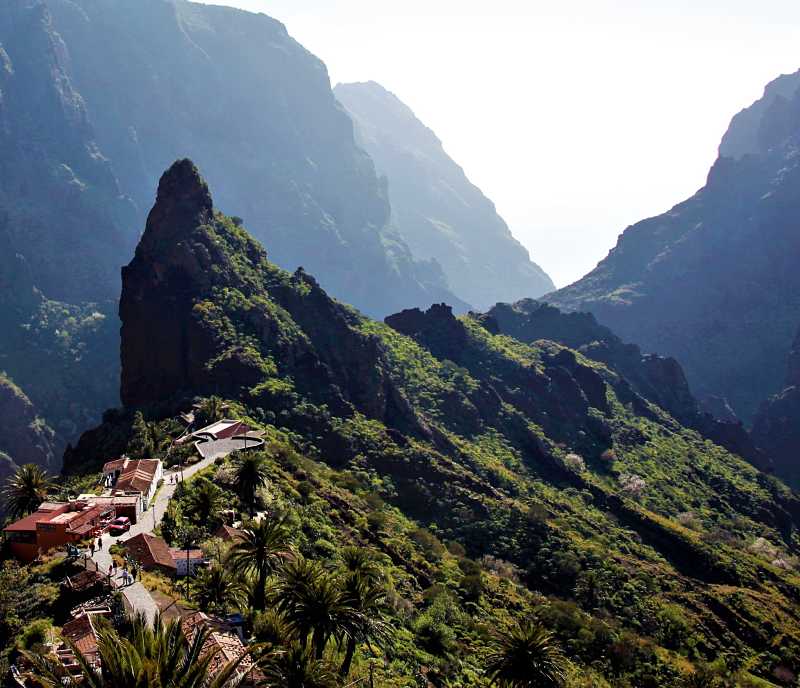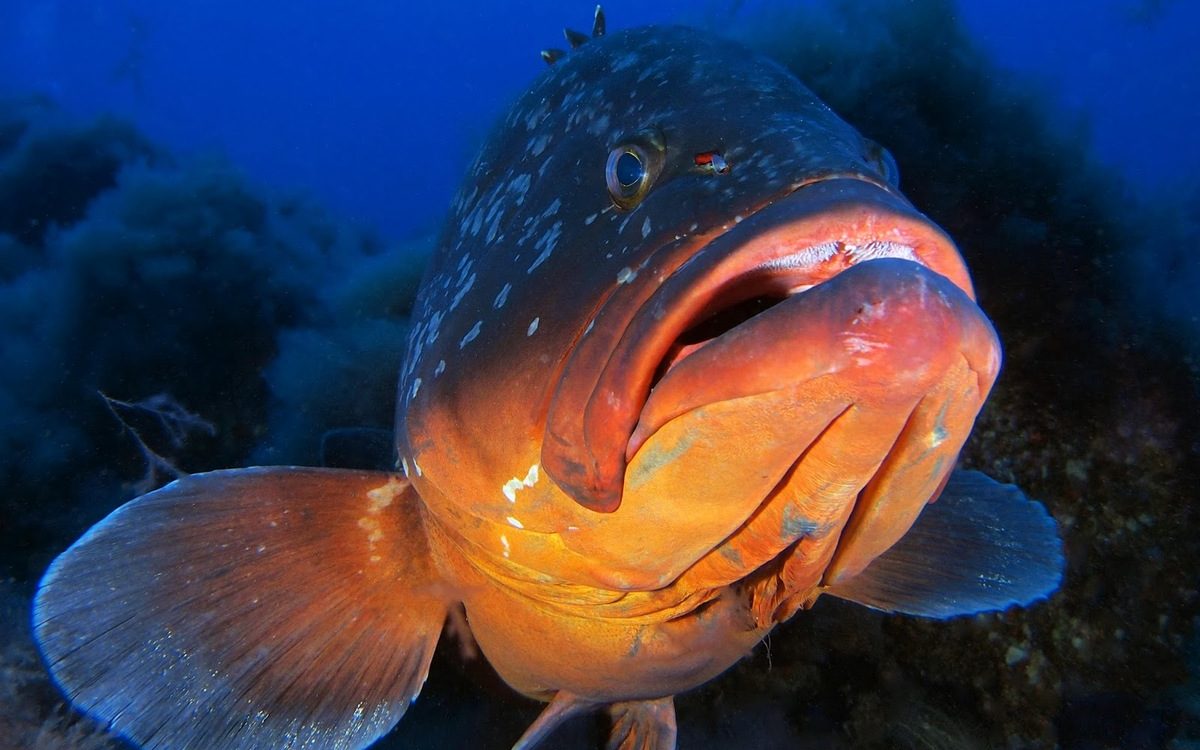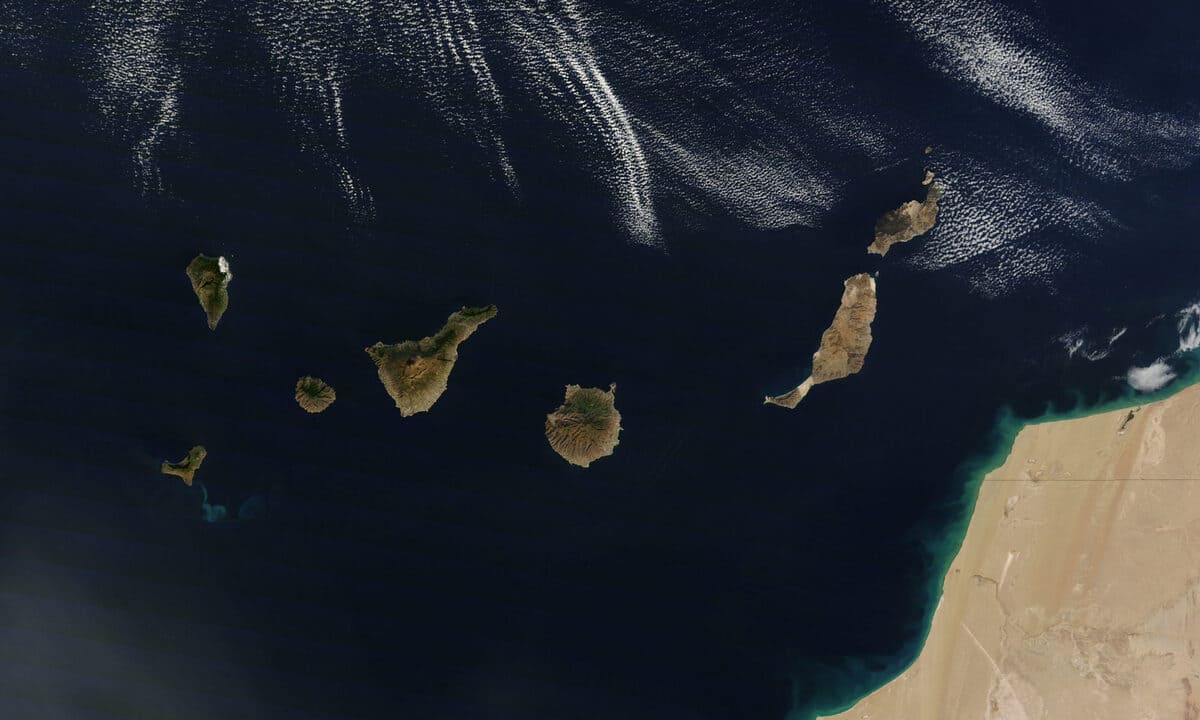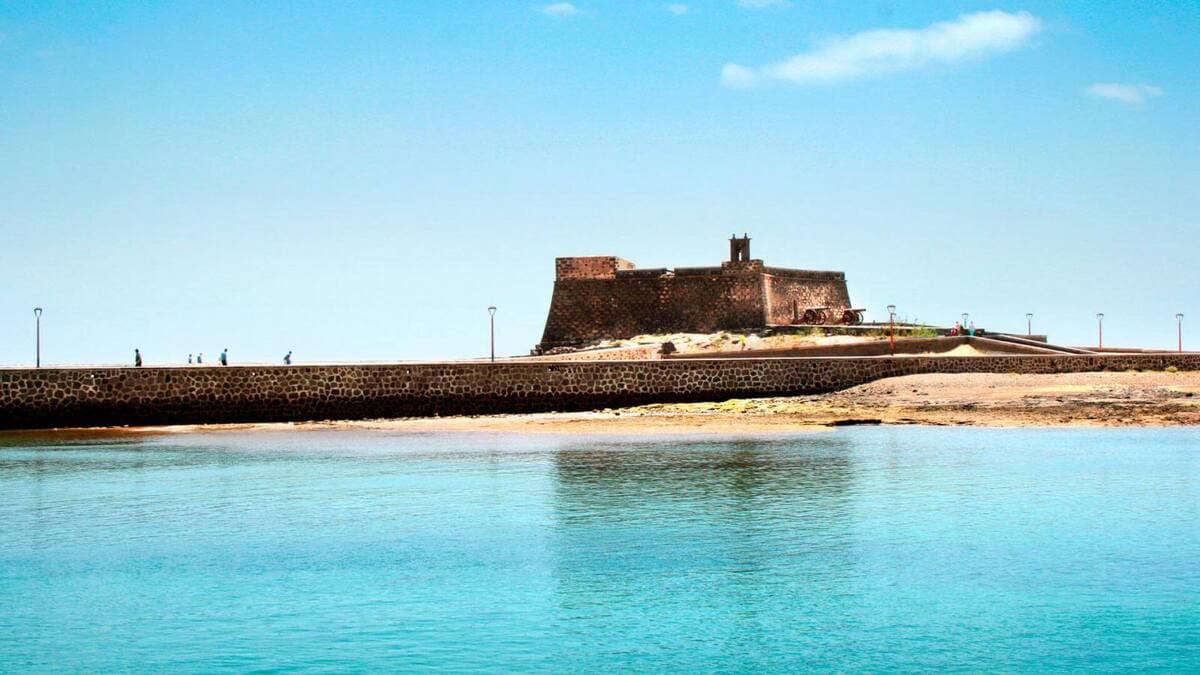The Masca Ravine is a must if you want to go hiking or trekking in Tenerife. Situated in a unique landscape, among volcanic rock, native flora and orchards, the Masca ravine offers us a view of more than 7000 million years of geological history. Whether you are a resident of the Canary Islands or a visitor, Masca is an obligatory destination for nature lovers. Are you coming to discover it?
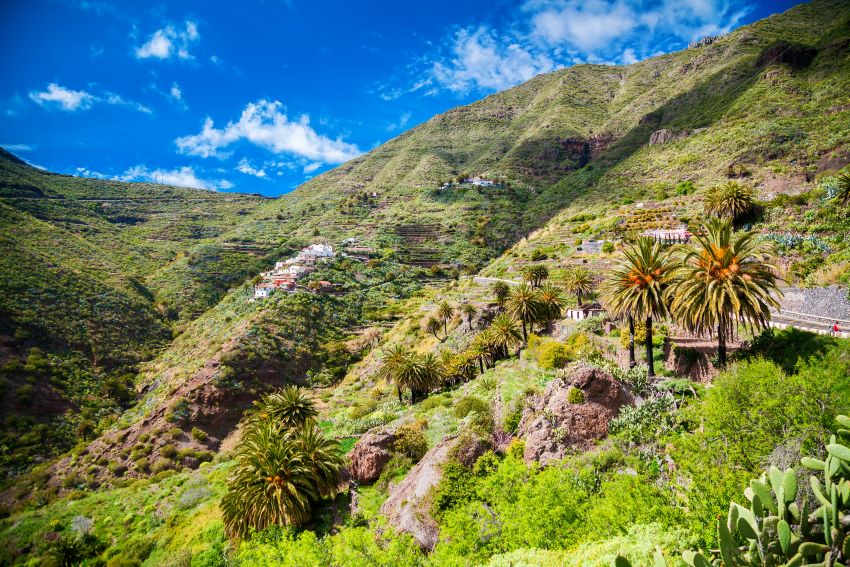
Everything you need to know about Barranco de Masca
The Masca ravine is located in the small and beautiful municipality of Buenavista del Norte, in the northwest of Tenerife, framed by the mountains of the Teno Rural Park.
The Masca Ravine celebrates its reopening, after more than three years closed for a thorough restoration to improve visiting conditions and the protection of such a unique environment.
In order to access the view, you must first register for free on the website caminobarrancodemasca.com. It has been decided to regulate visits to protect the environment and its delicate ecosystem and to guarantee the safety of hikers.

If you are wondering whether the descent of the Barranco de Masca is difficult, it all depends on your fitness, the weather conditions and whether you have the right equipment.
The descent through this ravine sculpted by water erosion is not very long, it is only four kilometres long. However, as the terrain is steep, with steep slopes, it is necessary to descend cautiously and take our time, which is approximately three hours.
The climb from the beach is much more demanding. We can get there from the sea, thanks to the sea taxi services, and climb the ravine. But in this case we must be in good shape.
The authorities have set up several checkpoints along the route both uphill and downhill to ensure the safety of visitors and to check that they have the appropriate equipment, such as footwear and warm clothing. Under the new rules, visitors must wear helmets.
Now you know how the descent of the Barranco de Masca is, let's enjoy the path and the singularities of this route.
Masca hamlet
El Caserío de Masca is a group of houses with typical architecture of the area, situated in the shape of an uve on the edge of the ravine. It is the idyllic home of about 100 people who live away from the stress and worries of modern society. Surrounded by palm trees, terraces and volcanic rock, the Caserío de Masca is well worth a leisurely visit. It is divided into four nuclei: La Bica, El Turrón, La Piedra and El Lomo de Masca. Be sure to admire its laurel tree and its 18th century chapel, located in the main square in La Piedra. There you can get information at the Visitor Centre. In the Caserío you can also sample the exquisite local cuisine.
The bridge
We leave the Caserío behind us and come to the wooden bridge. From this point, the path runs between the two banks. Be careful with the stones, as they are smooth and polished due to erosion and you could slip.
The orchards
All along the route we can find orchards that were used for subsistence farming and orchards next to the sea, established in the form of terraces.
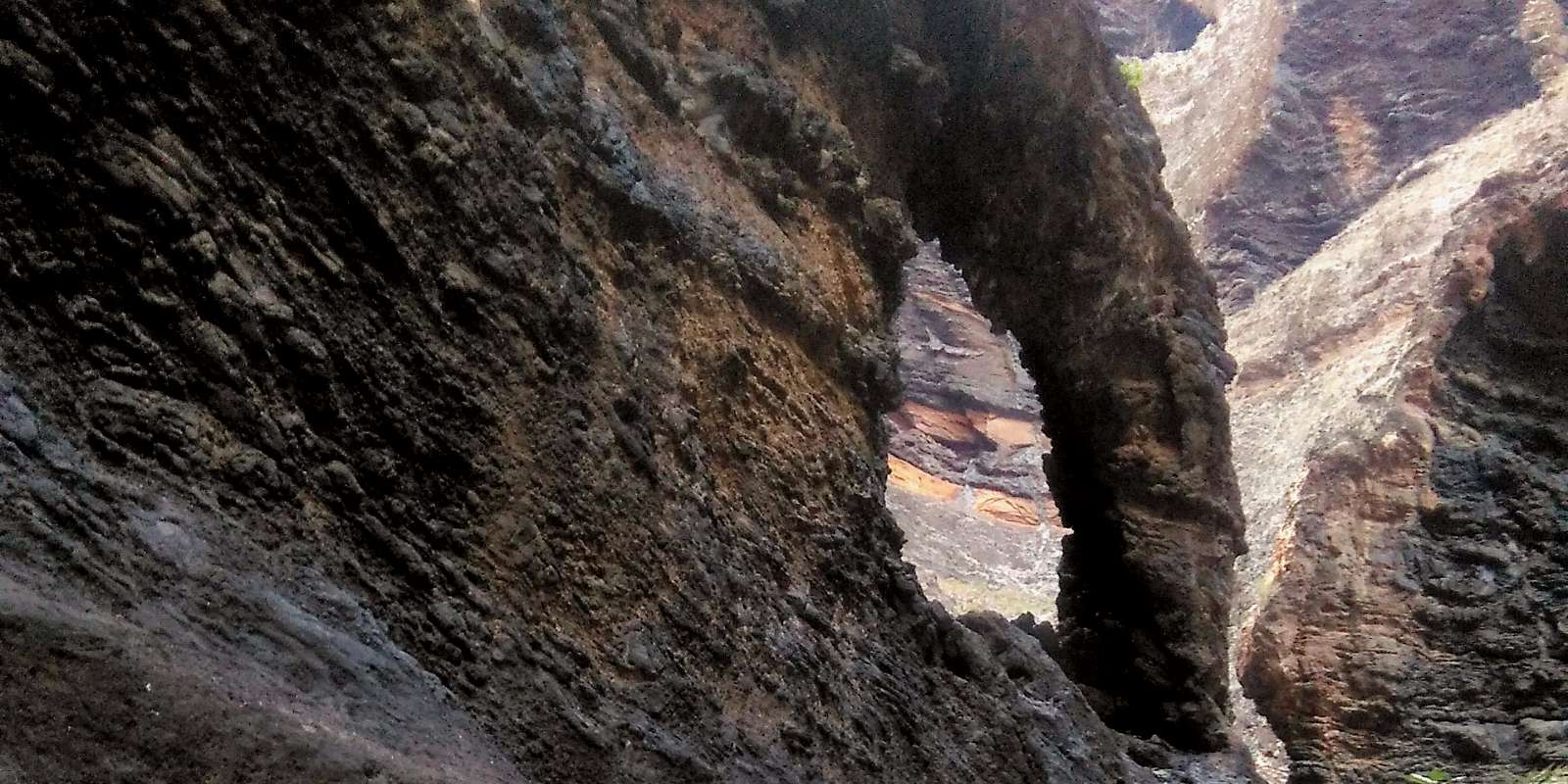
The dam
This dam not only crosses the Barranco de Masca ravine, but also the area of La Bica and the Madre del Agua ravine. Various irrigation canals run from the dam.
The Canyon
Once past the dam, the verticality of the walls overwhelms us with the full force of nature. In the canyon we must be especially careful when descending because of the risk of landslides. The incredible shapes of the rocks will transport you to a natural fantasy.
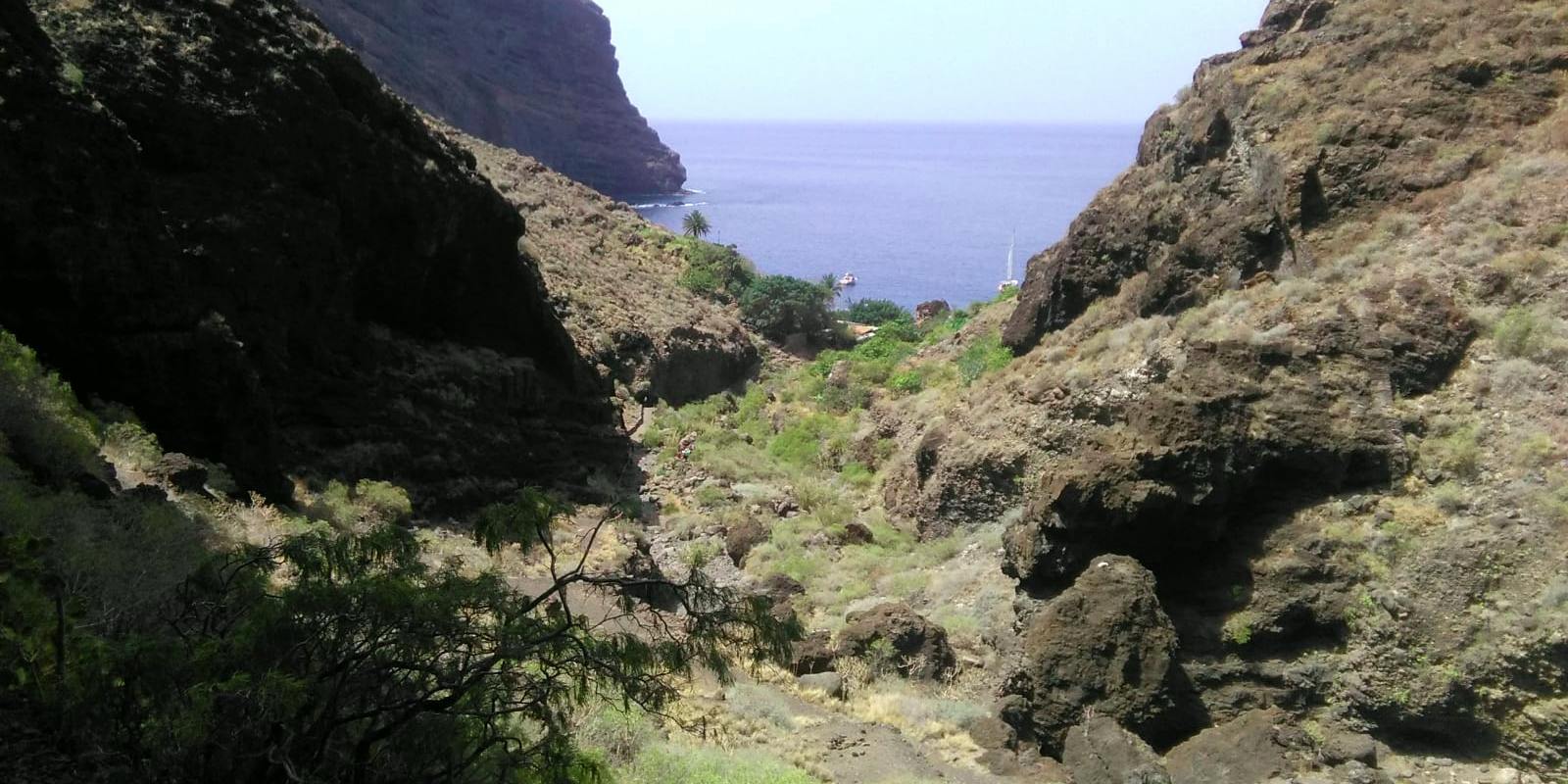
The Beach
The final reward at the end of the path is the beach. In this cove we can enjoy a refreshing swim sheltered by Los Gigantes, imposing volcanic cliffs 400 metres high.
Nature
Throughout the tour of the Barranco de Masca you can marvel at the biodiversity of the area and the endemic species. In addition to the wild goats, you can see the recently found spotted lizard or spot birds such as hoopoes, Moorish partridges or ospreys, known in the area as "guinchos".
In the sea, in Los Gigantes, you can enjoy scuba diving and see dolphins and pilot whales in their natural habitat.
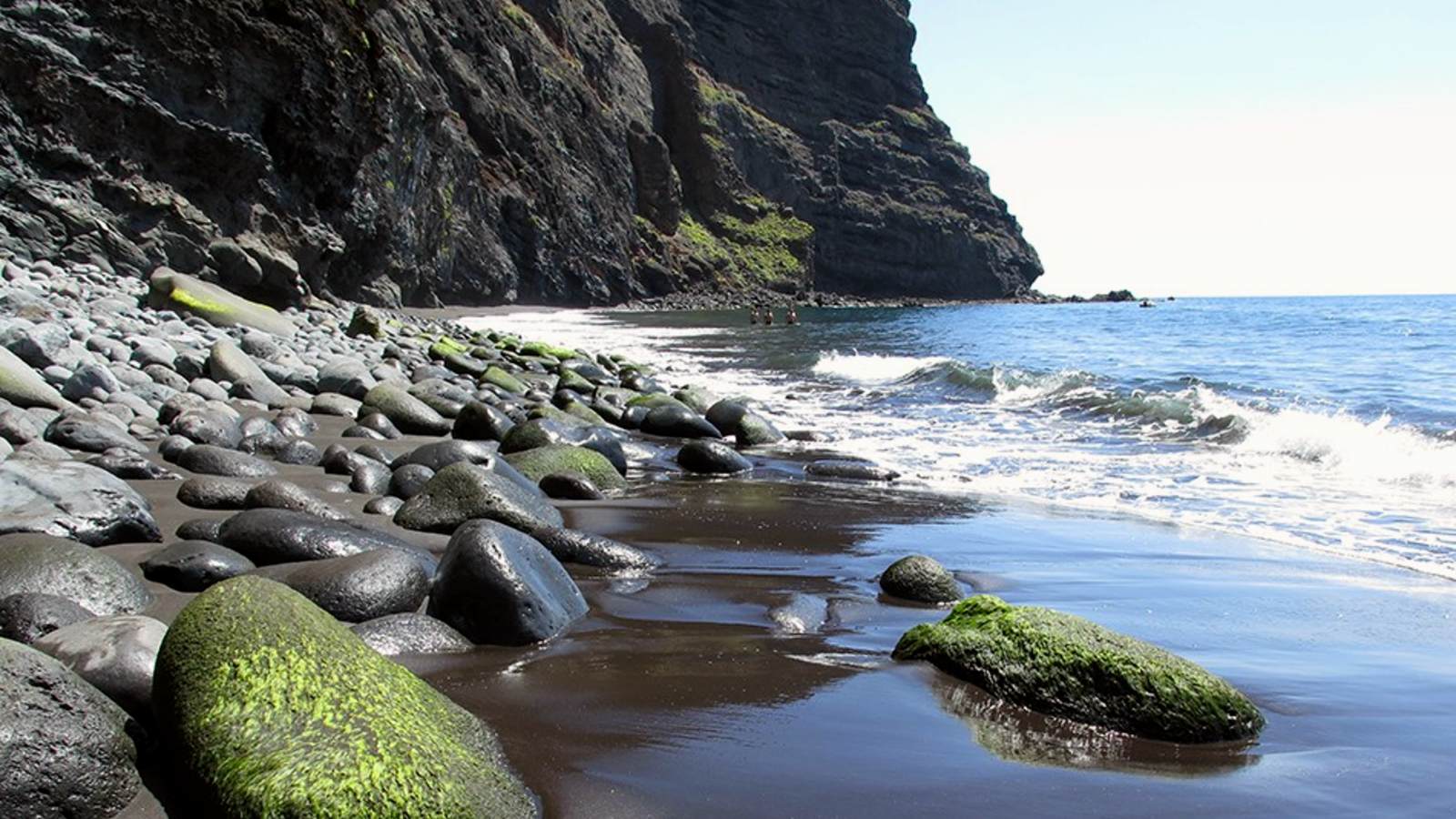
The Masca Ravine is now open and ready to welcome new visitors eager to discover its environmental richness, its impressive landscape and its history. Whether ascending or descending, the route has been adapted to guarantee the safety of visitors and respect for such a magnificent natural environment. Enjoy active tourism and nature while discovering the rich gastronomy and hospitality of its people on a trip you will remember forever.
Photos: planetacanario.com, tabaibaguesthouse.com.
